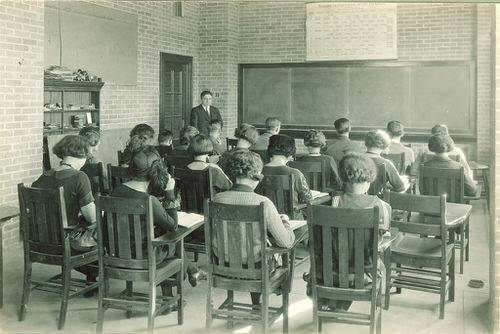
Ah, college — also known as “the most expensive wi-fi connection you’ll ever have.” The modern classroom is alive with the clicking of laptops and tapping of smart phones, and it’d be naive to think their owners are just dutifully taking notes.
Enter a new breed of educational apps that aim to re-engage those same students via the smartphones that distract them. These student response apps run on students’ personal smartphones to turn class lectures into a two-way dialogue. Students can use the apps to participate in class lectures, discussions and even competitions, all without looking up from their phones.
How They Can Work
Jason Bazylak, a University of Toronto lecturer in mechanical engineering, teaches one of the largest engineering courses on campus, with more than 1,000 freshmen in stadium seating. To make participation less intimidating, Bazylak requires his students to download and use Top Hat in class.
“It takes a lot of courage to raise your hand and shout out questions in a group that big,” he told ReadWrite. “I wanted to support the quiet students who might not speak up otherwise.”
Top Hat lets Bazylak modify and tweak his lecture in real time. After each subject segment, Bazylak uses the app to text the class a multiple-choice question they can answer on their cell phones. If 96% or more of the class gets it right, he moves on to the next topic. If they don’t, he continues on the same topic until he’s certain the class has grasped it.
The app also lets students text questions to Bazylak’s teaching assistant to help guide the discussion. Sometimes, his assistant simply texts answers back. If the question is a frequent one, however, he shares it with Bazylak for him to lecture on. Bazylak said these student driven questions end up compiled as a study guide before tests.
I found Bazylak through Top Hat’s highlighted success stories page. The professor said he wasn’t compensated for his testimonial. This June, he’ll attend the Canadian Engineering Education Convention to present a paper on his use of the relatively new app.
Saturated Response
Top Hat joins a market saturated with similar products. Poll Everywhere claims to have 100,000 educators as customers, which just might make it the current market leader. eClicker Presenter delivers class results after every session. Socrative, still in beta, teaches through mobile games.
All of these apps offer roughly the same functions, including options to present students with quizzes, polls, and discussion questions during class for real time learning and instantaneous feedback. All without requiring students or teachers to spend much — sometimes any — money on software or equipment.
Top Hat, for instance, costs students roughly $20 a semester; Bazylak requires them to buy it the same way he might require purchase of a textbook.
No Reply At All
Mobile response apps aim to shift student in-class activity from raised hands to lowered phones. But they don’t do anything to minimize the original distraction. If anything, they might make it easier to get away with texting and gaming during class.
It’s also difficult to tell if response systems are effective for student engagement. A 2008 study at the University of Toronto polled 715 students about whether or not they felt that response systems — that is, hand-held clickers; this was way before smartphones were as common as they are today — were effective for learning. About half didn’t think they helped. A cursory glance at dozens of related studies reveals similarly lukewarm results.
Bazylak told me that while response apps work for him, they’re not a magic bullet.
“It’s not learning in a box, it’s a tool,” he said. “Some lecturers aren’t as welcoming to questions as others. The tool is only as conducive to learning as the lecturer will allow it to be.”
There’s another place where students can turn lectures into two-way discussions — the Internet, with its forums, wikis, message boards, and search engines that provide instantaneous answers to whatever students need to know. The bigger question raised by response apps, in fact, might be whether it’s the lecture hall itself whose days might be numbered.
Photo courtesy of The University of Iowa Libraries on Flickr, CC 2.0

















